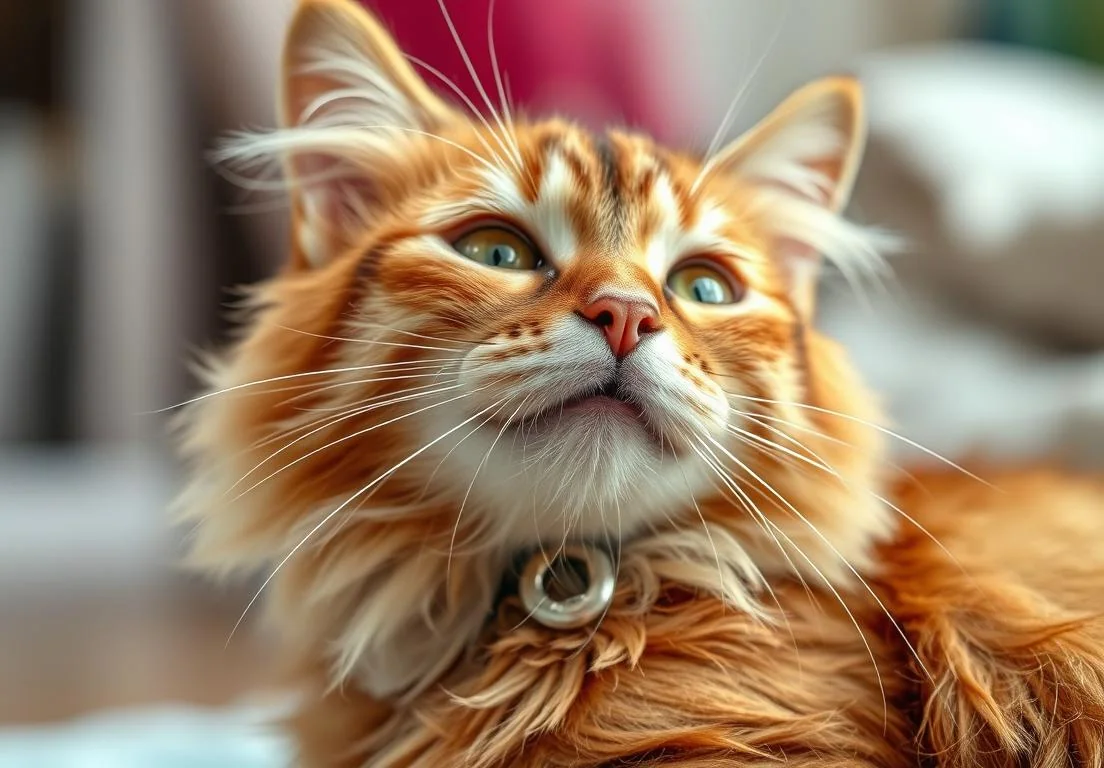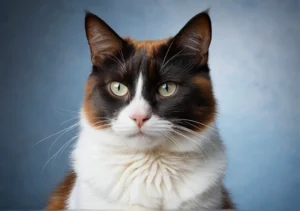Cats are enchanting companions, but increased shedding can be a puzzling issue for many cat owners. If your feline friend seems to be leaving a little more fur behind than usual, you’re not alone—this problem is more common than you might think.
Increased shedding in cats can indicate changes in their health, environment, or seasonal shifts. Factors such as stress, allergies, diet, or underlying medical conditions can all contribute to this phenomenon. Curious about what might be causing your cat to shed more? There are many layers to this topic, and you’ll want to uncover all the details below.

What Causes Seasonal Shedding?
As the seasons shift, cats naturally respond to changes in daylight and temperature, triggering their instinctive shedding cycles. Generally, you’ll notice increased fur loss during spring and fall. This is when your cat sheds their winter coat, making way for lighter fur to accommodate warmer temperatures, and conversely, growing thicker hair for the cold months.
Light exposure plays a pivotal role here. Cats are sensitive to changes in the length of daylight, which influences their hormones that govern shedding.
Cats experience seasonal shedding, particularly in the spring, influenced by hormonal changes triggered by lengthening daylight hours and rising temperatures. As the days get longer, hormonal fluctuations occur that affect hair growth and shedding cycles. Increased exposure to sunlight also plays a role in this process. Cats often shed their winter coats during this time to regulate their body temperature, making room for a lighter coat suited for warmer weather. Understanding these factors can help cat owners manage shedding effectively through regular grooming and attention to the cat’s nutritional needs and overall health. For more information on how these seasonal changes impact cat shedding, visit Mad Penguin. As the days get longer, their bodies prepare for warmer months ahead, leading to more fur falling out. Conversely, as it gets darker in the fall, your cat will begin to shed its lighter summer coat to replace it with a cozy winter pelt.
Alongside natural cycles, diet can also influence how much your cat sheds. A nutrient-rich diet enables a healthy coat that sheds less, while deficiencies in vitamins or minerals can make shedding particularly pronounced. Make sure your furry friend gets quality food packed with omega-3 and omega-6 fatty acids, known to promote a healthy coat.
How Does Stress Affect Shedding?
Stress isn’t just a human dilemma; it can significantly impact your cat’s health, leading to excessive shedding. Environmental changes, like moving homes or introducing new pets, can trigger anxiety. This heightened stress response manifests in fur loss as your cat’s body reacts to perceived danger or disruption in their routine.
Physical touch is another big player here. Cats often groom as a coping mechanism, and that can increase shedding. If your cat’s been acting extra clingy or agitated, it’s worth considering what’s making them uneasy.
Moreover, certain stress-related health issues—like allergies or skin irritations—can compound shedding. To help your cat through challenging times, try maintaining a predictable routine, offering a safe space, or playing stress-relieving music. Creating a calm environment can enhance your cat’s well-being, reducing instances of shedding linked to stress.
When it comes to handling stress-induced shedding, consider incorporating regular grooming sessions. Brushing not only helps remove loose fur but also creates bonding moments that can soothe an anxious cat. This simple routine can work wonders in reducing stress levels, minimizing shedding in the process.
Are Allergies a Factor?
If your cat is shedding more than usual, allergies might be the cause. Just like us, cats can develop allergies to various substances, whether it’s food, dust, or pollen.
Food allergies are often tied to protein sources like beef or chicken. If your cat has started shedding excessively, keep an eye out for symptoms like itching, rashes, or digestive issues. Switching to a hypoallergenic diet under your vet’s guidance can help rule this out.
Environmental allergies can also play a role. Dust mites, mold, and seasonal pollen can provoke a response, leading to increased shedding and discomfort. Regular cleaning to reduce allergens in your home can be beneficial, as well as using air purifiers. If you suspect allergies, a trip to the vet for testing can help identify the culprit, allowing you to tackle the issue head-on.
Is Your Cat’s Diet Impacting Shedding?
A poor diet can have a noticeable impact on your cat’s coat and shedding.
To understand how a poor diet affects shedding, one can consider how each nutrient deficiency impacts coat health. For instance, without sufficient protein, a cat will struggle to synthesize keratin, a critical protein in hair structure. As a result, the coat may become brittle and lead to increased shedding. If omega-3 and omega-6 fatty acids are lacking, the skin may become dry and flaky, prompting more shedding as the cat’s body tries to rid itself of unhealthy hair. This illustrates how nutrient deficiencies logically connect to poor coat quality and shedding. Lack of key nutrients—like omega-3 fatty acids, protein, and vitamins—can lead to a dull, brittle coat and increased fur loss.
Make sure to feed your cat a high-quality diet rich in these essential nutrients:
- Protein: Essential for hair growth. Cats are obligate carnivores, so a meat-based diet is crucial.
- Omega-3 and Omega-6 fatty acids: These fats promote a healthy coat and skin, reducing shedding. Look for foods with fish oils or flaxseed.
- Vitamins: Vitamins A, E, and B can help maintain healthy skin and fur.
If your cat’s diet seems lacking, consider transitioning to a brand that offers a well-rounded formula or consult your vet about dietary changes. A nutritional overhaul can do wonders in restoring that gorgeous coat while keeping shedding in check.
Could It Be Hormonal Changes?
Hormones can significantly impact a cat’s shedding patterns, especially in unspayed females and unneutered males. Hormonal fluctuations during mating seasons can ramp up shedding as a cat’s body prepares for possible reproduction. This surge doesn’t just happen during mating; any stress or changes in their environment can trigger these fluctuations. For instance, a female cat in heat might shed more fur as her body responds to increased estrogen levels.
Beyond mating, age can also play a role. Cats transitioning into their senior years may experience shifts in their hormonal balance, leading to changes in their coats. If you’re noticing excessive shedding paired with other changes, like mood alterations or appetite changes, it could be worth discussing with your vet. Sometimes, spaying or neutering can stabilize these hormonal changes, reducing excess shedding in the long run.
What Health Issues Might Be at Play?
Increased shedding can sometimes point to underlying health issues, and it’s worth keeping a close eye on your furry friend. Several things could be at play:
- Allergies: Environmental allergens like pollen, dust mites, or even specific food ingredients can lead to an uptick in shedding.
- Skin Conditions: Conditions like fungal infections or parasites (fleas, mites) can irritate the skin, prompting your cat to shed more fur.
- Nutritional Deficiencies: Lack of essential fatty acids or other vital nutrients can affect coat health, leading to excessive shedding.
- Stress: Situational stressors—new pets, moving homes, or changes in routine—can make your cat shed more as they react to their environment.
If you find your cat’s shedding has suddenly increased and is accompanied by other symptoms like scratching, redness, or bald patches, it’s crucial to get them checked out by your vet. Sometimes, a simple dietary adjustment or a topical treatment could make a world of difference. Being proactive will help ensure your kitty’s coat stays as healthy as ever.
How Can Grooming Help Manage Shedding?
Regular grooming is a game changer when it comes to managing your cat’s shedding. First off, it helps remove excess hair before it lands on your furniture or clothes. Brushing your cat a few times a week can significantly reduce the amount of loose fur floating around your home.
Use a high-quality brush suited to your cat’s coat type. For long-haired breeds, a wide-toothed comb followed by a slicker brush works wonders. Short-haired cats typically do well with a rubber brush or a soft bristle brush, which can help minimize hair loss while also massaging their skin.
Another key benefit of grooming is that it promotes blood circulation and distributes natural oils throughout your cat’s coat, enhancing its overall health and shine. Be sure to check for any skin issues or irritations while grooming; addressing these early can prevent more significant problems later on.
Keep in mind, you can also make grooming a bonding experience. Start slow and reward your cat with treats or affection to create a positive association with the grooming process. It’s not just about alleviating shedding; it’s a way to show your cat some love.
What Unique Facts About Cat Shedding Should You Know?
Shedding patterns can reveal a lot about your cat’s health. For instance, did you know that seasonal changes play a big role? Many cats shed more in the spring and fall due to changes in temperature and daylight. This is when their coats transition between winter and summer fur.
It’s also essential to recognize that shedding can be a sign of stress. If your cat is losing more fur than usual, it might be reacting to changes in its environment, such as moving homes, new pets, or even changes in routine.
Another interesting insight is the effect of diet on shedding. Cats on a high-quality diet full of essential fatty acids and nutrients like Omega-3 and Omega-6 tend to shed less and have healthier skin.
Keep an eye on any sudden changes in your cat’s shedding. If it becomes excessive or is accompanied by bald patches or skin irritations, consider reaching out to your vet. They can help rule out allergies or other health issues that might be causing those problematic fur ball moments.
How To Create a Comfortable Environment for Your Cat?
Shedding can often increase due to stress, so crafting a calming environment is key to keeping those hairs in check. Start by providing a safe haven; consider setting up cozy spaces with soft beds or blankets where your cat can retreat when things get a bit overwhelming. Cats love their nooks, so think about adding cat trees or shelving for vertical escape routes. These help them feel secure while giving them a place to scratch and play.
Maintaining a consistent routine can also help. Cats thrive on predictability; regular feeding times, play sessions, and cuddle time make them feel more at ease. Keep noise levels down and minimize sudden movements, as loud sounds can lead to anxiety.
Also, consider the litter box situation. Make sure it’s clean and easy to access; a dirty box can stress your cat, contributing to extra shedding. A good rule of thumb is to have one litter box per cat, plus one extra, and place them in quiet, low-traffic areas.
Don’t underestimate the power of interactive play. Engaging with your cat using feather wands or laser pointers not only provides physical exercise but also helps reduce anxiety. Engaging their brains can be just as important. Puzzle feeders or treat-dispensing toys keep them mentally stimulated and can distract from stressors that lead to excessive shedding.
Lastly, if you haven’t already, investing in an air purifier can be a game changer, especially if you have allergens in your home. Cleaner air can lead to overall better health for your cat, reducing the need for extra shedding due to skin irritation.
By making these thoughtful adjustments, you’ll create a welcoming atmosphere that helps keep your cat happy and healthy, which in turn can reduce that pesky shedding.
Alex, a passionate animal lover, has experience in training and understanding animal behavior. As a proud pet parent to two dogs and three cats, he founded AnimalReport.net to share insights from animal experts and expand his knowledge of the animal kingdom.




